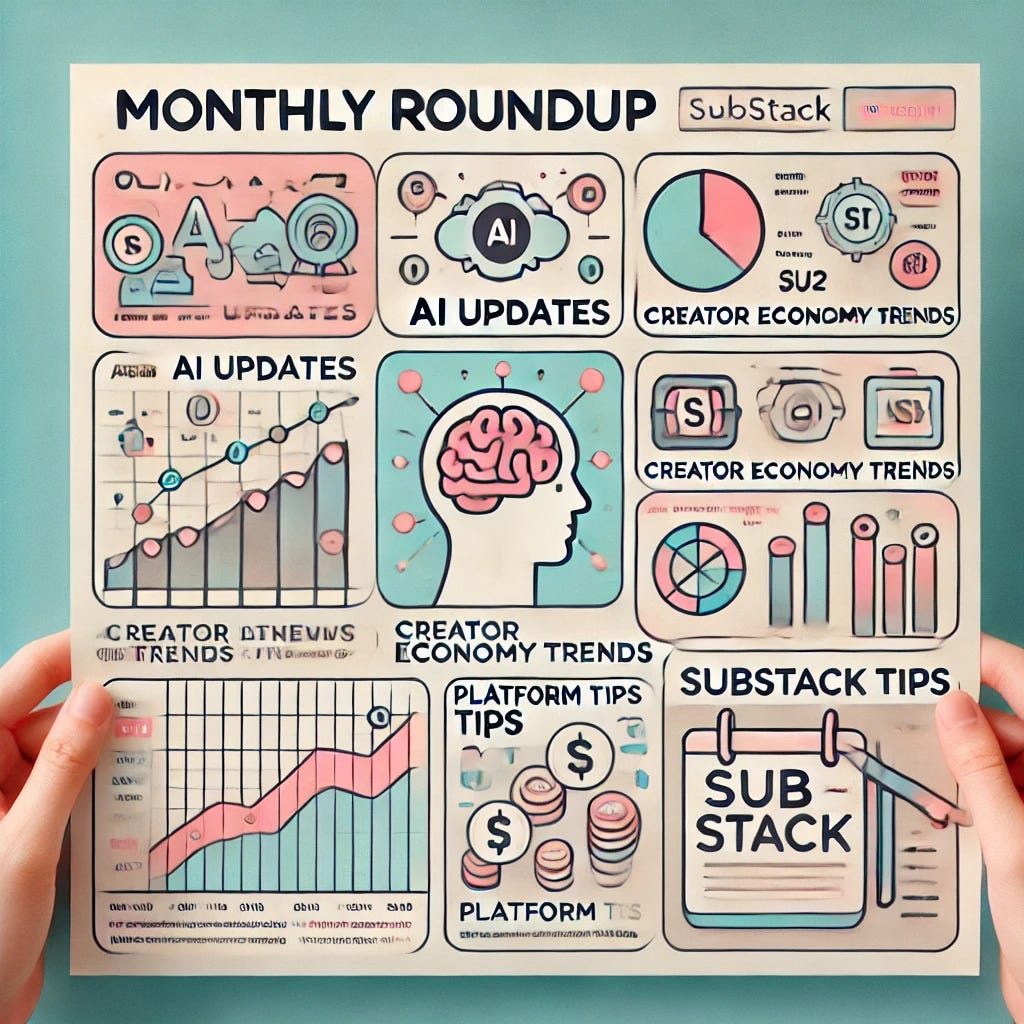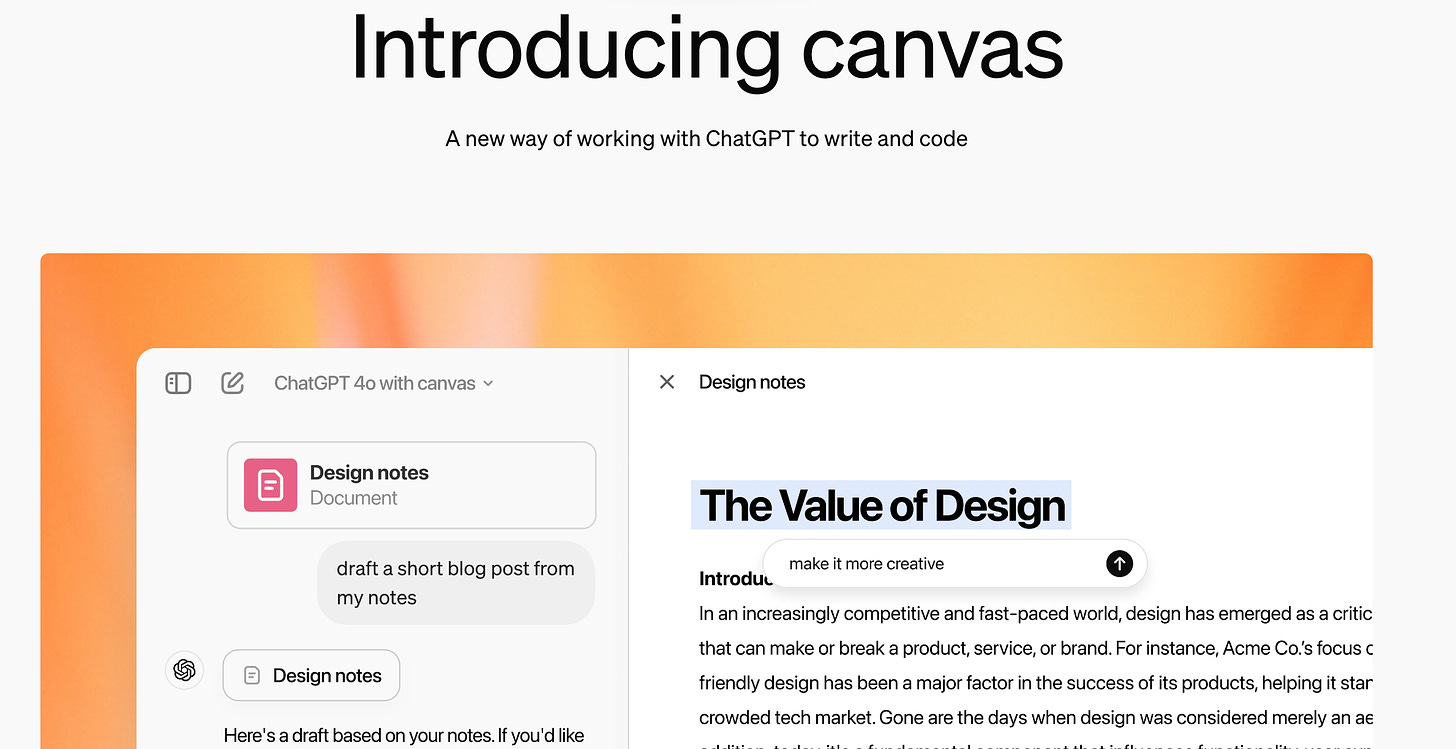Hello Everyone!
Thank you for your continued support of this publication.
Over the past few months, my productivity took a nosedive due to a left-arm shoulder injury (yes, arm-wrestling a heavy printer!). 😔 Typing was challenging, and I had to rely on physical therapy and medication to regain full use of my arm. Recovery has been slower than I expected!
Unfortunately, voice-assisted writing with older tech tools wasn’t much help, either. This experience made me realize how valuable voice-based generative AI could be in the future, offering a more contextual and adaptive writing assist for those facing similar challenges.
To make up for the slower pace of new content, I opened the entire catalog of 73 in-depth articles and premium cheatsheets to all readers over the past few months. I also celebrated reaching one thousand readers with a 50% off lifetime discount. If you haven’t redeemed it yet, I’ve re-enabled the offer—it’s available until October 31.
I’m posting short notes daily as I get back into a regular routine.
As a token of appreciation, I’m glad to extend all paid subscriptions by three months (including for new subscribers) and offer my upcoming Substack Definitive Guide e-book for free once it’s published, as a thank-you for your support over the past few months. Please feel free to request topics of interest in the ‘chat.’
Even though I wasn’t able to write as much, I’ve been busy researching and reading about business and technology trends, including AI, new tools, and developments in the digital economy.
I’ve also been exploring Substack’s features (a favorite pastime 😉), including the recently launched live video feature. The videocast between the founders explaining why they decided to launch it is insightful and unlike any product launch discussion I’ve heard (hint: they think it’s such a cool idea, so why not!). Check it out on the founder’s notes page.
Here are a couple of platforms I explored in-depth:
Digital Creator Platforms
Stan Store: Designed for social media creators (especially TikTok) and mobile-first users, Stan Store charges $29–99 monthly, with premium features on higher plans and no free tier.
The interesting bit? Its founder—a Stanford Business School dropout—secured $5M in 2021 and grew the company from $1.7M to $14.7M in annual recurring revenue (ARR) within 18–24 months.
While still in its infancy regarding its feature set, the platform seems to have quickly gained a dedicated following.
Payhip: A London-based company founded in 2012 with 2024 revenues of $8M. It provides a user-friendly platform for creating courses, selling digital products, and coaching, with built-in tax handling for EU VAT in the UK.
Its pricing model is simple: Pay 5% of sales or a monthly fee. Your choice. (Gumroad charges 10%) (Thanks Salvador Lorca 💜🔥 for the tool suggestion!)
Payhip goes up against established names like Kajabi (founded in 2010) and newer contenders like Exly, which caters to international creators via a mobile app.
Tracxn reports that these platforms (like Payhip, Kajabi, and Exly and others ) have raised “over $718M across 19 funding rounds with 66 investors.”
All of this highlights how the creator economy is thriving, with an estimated global market size of over $104 billion in 2023, according to Influencer Marketing Hub, and projected to reach $480 billion by 2027.
Stay tuned for a closer look!
In AI News
OpenAI recently raised significant additional funds, securing $6.6 billion and pushing its valuation to $157 billion as it transitions to a for-profit model. This shift should motivate them to explore ways to make AI more affordable in the long run.
Offering an "AI-Platform-as-a-Service" (AI-PaaS) could help OpenAI recoup its investments while leveraging insights gained from 250 million users.
Competing with such a vast dataset poses a challenge for other AI models, and OpenAI is likely to maintain its edge in powering new language models for some time.
The company’s latest feature, Canvas, launched today for premium users.
According to the collateral, Canvas aims to make the writing and coding experience more seamless, with ChatGPT dynamically detecting when an interactive session is needed.
After reading their documentation, it's clear to me that prompt engineering will remain a critical skill in the evolving landscape of generative AI.
The important bit? It maintains context while being interactive—a hassle with the standard interface!
I'm currently testing the beta, so stay tuned for more updates!
Quick Tips: Substack
Notes: If your notes engagement is flagging, try following more people, reading new writers, engaging with comments, and offering likes. The notes algorithm is being continually updated and still leans towards revenue-producing media celebrities, writers, and high-volume publications for wider distribution. If you are not writing a note daily, you need to do both to boost your visibility on the platform. Check my earlier post on how to engage with Notes.
Cross-posts: Disallow others from cross-posting your articles without your consent through Dashboard/Settings, ‘Allow cross-posting.’ One writer recently wrote in ‘Notes’ that he was being signed up to new publications without consent—the only way this could happen is if writers are collaborating and exchanging subscriber mailing lists by downloading their lists from Substack.
Exporting your data: Are you saving your articles, drafts, and mailing lists often? With your mailing list, you can easily migrate to another platform like beehiiv or Ghost without impacting your existing audience!
Video Notifications: Tired of getting those pesky live video notifications after the event or when you’re not a paid subscriber? Turn them off under 'Profile/Account' in your settings.
Filters: Also, consider enabling filters in 'Profile/Account' to block explicit images and turning off autoplay for videos.
Video and Image Rights: If you add custom images and videos to your posts, consider adding a watermark, as newsletter platforms (including beehiiv, Ghost, and Substack) enable easy downloads for users. Only single images are watermarkable on Substack. Gallery images and videos are not automatically copyrighted or watermarked by default, so it's essential to protect your content proactively when distributing it online. Stay tuned for upcoming tips!
Bugs: Substack's latest features have introduced some bugs, which may—or may not—have been fixed. For instance, the notification setting for turning off live video alerts doesn’t seem to work, as I still receive notifications despite disabling them. The app's functionality is also hit-or-miss: sometimes writing replies to comments is missing a 'submit' button 😉; editing is still not available, and poll forms continue prompting us to fix something within 1-255 characters before exiting, even when everything seems fine! There are probably more issues, but it seems no one’s listening over at founder land! 😊
Thank you for reading!
Jayshree
p.s. Let me know if you found this useful, and share any trends you’re following!
If you're considering using generative AI without compromising your writing, I can help fast-track your learning in a 60-minute hands-on session. We can discuss how to make the most of generative AI for your projects without impacting your creativity.





Thanks for sharing your story - your mobility challenge will lead to innovation for your workflow. AI companions can assist- they are everywhere! EG Voice for Chat GPT on smart phone.
So sorry to hear about your arm! The inconvenience combined with the ongoing pain can be debilitating.
I’m wondering what you’ve heard about the rollout of Live video features. As my funnel is built around events, I’m eager to try it.
At this rate, I may experiment with YouTube live through Zoom first just to get a feel for ways to work with the funnel challenges of live events.
I spend a lot of time getting people past using Substack.